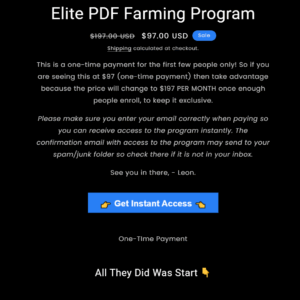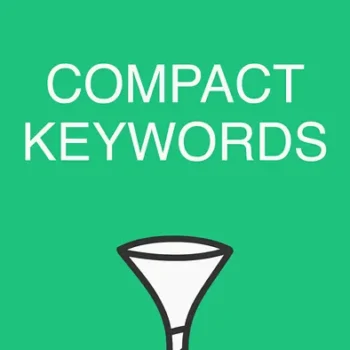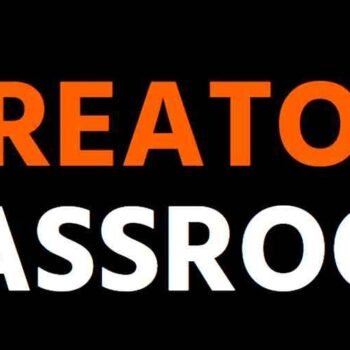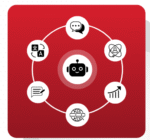Pierre Herubel – Content-First Ecosystem: Redefining Digital Growth
$97.00 Original price was: $97.00.$29.00Current price is: $29.00.
In the modern digital age, where attention spans are short and competition for online visibility is fierce, the approach to content strategy has evolved drastically. Among the thought leaders pioneering this transformation, Pierre Herubel – Content-First Ecosystem stands out as a unique methodology that integrates content creation, distribution, and audience engagement into a cohesive, growth-driven framework.
The Content-First Ecosystem emphasizes that content should not be an afterthought but the central driving force behind digital marketing, brand building, and customer interaction. Unlike traditional strategies that prioritize sales funnels or platform-first approaches, this methodology positions content as the nucleus around which all digital activities revolve.
Understanding the Concept of a Content-First Ecosystem
At its core, a content-first ecosystem is a strategic framework where content becomes the main asset of a business. This philosophy goes beyond creating blog posts, social media updates, or videos; it involves a holistic approach where content informs every business decision and shapes the customer experience.
Pierre Herubel, a visionary in digital strategy, advocates for aligning content creation with audience needs, market trends, and business goals. By placing content at the center, businesses can achieve three critical outcomes:
Enhanced Audience Engagement: When content resonates with the audience, it naturally drives interaction, feedback, and loyalty.
Sustainable Growth: A consistent and strategic content approach ensures long-term visibility and influence.
Revenue Optimization: By embedding content across customer touchpoints, businesses can guide potential customers through an informed, trust-building journey.
Key Principles of the Pierre Herubel – Content-First Ecosystem
The Pierre Herubel – Content-First Ecosystem operates on several foundational principles that distinguish it from traditional marketing strategies:
1. Audience-Centric Approach
Every piece of content begins with the audience. Instead of focusing solely on products or services, this ecosystem identifies the needs, pain points, and aspirations of the target market. Through surveys, analytics, and direct feedback, businesses can create content that truly resonates, increasing both engagement and brand loyalty.
2. Multi-Channel Integration
In today’s fragmented digital environment, relying on a single channel is insufficient. The content-first ecosystem advocates for distributing content across multiple platforms – websites, social media, newsletters, podcasts, and video platforms – while maintaining a unified voice and brand consistency. This ensures maximum reach without diluting the core message.
3. Data-Driven Content Creation
Content without insights is often wasted effort. Pierre Herubel emphasizes the importance of data-driven strategies, using metrics to inform what topics to cover, the preferred formats, optimal posting times, and engagement patterns. This continuous feedback loop allows businesses to refine their content strategies and achieve higher ROI.
4. Evergreen and Value-Oriented Content
The ecosystem prioritizes content that remains valuable over time. Unlike short-lived campaigns, evergreen content—such as tutorials, guides, and thought leadership pieces—continues to attract traffic and generate leads long after publication. This approach maximizes resources while building authority in the niche.
5. Integrated Monetization
A true content-first ecosystem doesn’t just focus on visibility; it integrates revenue opportunities within the content strategy. Whether through product placements, affiliate marketing, subscription models, or service offerings, content becomes a monetization engine without compromising user experience.
Implementing the Pierre Herubel – Content-First Ecosystem
Creating a content-first ecosystem involves a structured, phased approach. Here’s how businesses can implement it effectively:
Phase 1: Research and Audience Mapping
Identify the target audience, their preferences, and pain points.
Conduct competitor analysis to understand content gaps.
Use tools like Google Analytics, social listening platforms, and surveys to collect actionable data.
Phase 2: Content Strategy Development
Define content objectives aligned with business goals.
Plan content types, formats, and channels.
Establish a content calendar to maintain consistency and relevance.
Phase 3: Content Creation and Optimization
Develop high-quality, value-driven content that addresses audience needs.
Optimize content for SEO without keyword stuffing.
Incorporate storytelling, visuals, and interactive elements to enhance engagement.
Phase 4: Distribution and Amplification
Share content across multiple platforms with customized messaging for each channel.
Leverage partnerships, guest posts, and influencer collaborations for broader reach.
Utilize paid advertising strategically to boost high-performing content.
Phase 5: Measurement and Continuous Improvement
Monitor performance using KPIs such as traffic, engagement, conversion rates, and retention.
Adjust content strategies based on data insights.
Iterate continuously to stay relevant and ahead of competitors.
Benefits of Adopting a Content-First Approach
Businesses embracing the Pierre Herubel – Content-First Ecosystem experience several tangible benefits:
Brand Authority: Establishing a strong content presence builds trust and positions the business as an industry leader.
Customer Loyalty: Engaging content nurtures long-term relationships with the audience.
Better ROI: Strategically planned content improves marketing efficiency and revenue generation.
Adaptability: A content-first model allows businesses to pivot easily in response to market changes.
Sustainable Growth: Focused, audience-driven content creates a steady flow of leads and opportunities.
Real-Life Examples
Many successful companies have adopted principles aligned with the Content-First Ecosystem. For example:
HubSpot uses educational content to drive inbound leads, positioning themselves as thought leaders in marketing and sales.
Patagonia prioritizes storytelling around sustainability, resonating deeply with their target audience while driving brand loyalty.
Neil Patel Digital consistently provides actionable insights through blogs, videos, and guides, converting content into tangible business outcomes.
Challenges and Solutions
Implementing a content-first ecosystem is not without challenges:
Content Saturation: In crowded markets, creating unique content is difficult. Solution: Focus on niche topics, storytelling, and audience-specific pain points.
Resource Allocation: Producing high-quality content requires time and expertise. Solution: Build an internal content team or collaborate with freelancers and agencies.
Measuring Impact: Quantifying the ROI of content can be complex. Solution: Use analytics, CRM tools, and multi-touch attribution models.
Future of Content-First Ecosystems
As digital platforms evolve and user behavior shifts, the Pierre Herubel – Content-First Ecosystem remains forward-looking. Trends such as AI-generated content, interactive media, and immersive storytelling are becoming integral to content strategies. Businesses that adopt a content-first mindset will not only survive but thrive in the ever-changing digital landscape.
Conclusion
The Pierre Herubel – Content-First Ecosystem redefines how businesses approach digital marketing. By prioritizing content as the central asset, companies can engage audiences, drive growth, and establish long-term authority. Unlike traditional strategies that focus on immediate sales or platform-specific tactics, this ecosystem integrates research, creation, distribution, and monetization into a cohesive framework that ensures sustainable success.
For businesses looking to dominate their niche, adopting a content-first approach inspired by Pierre Herubel’s methodology is no longer optional—it’s essential.









